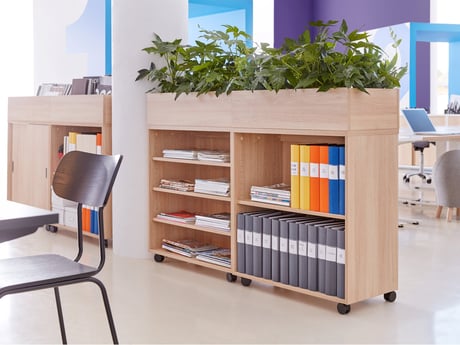How to Create a Good and Encouraging Learning Environment in Preschool

Creating an encouraging learning environment in preschool is essential for fostering children's development and providing educators with a productive workspace. The right interior design, adaptable furniture, and thoughtful colour schemes can transform any preschool into a vibrant learning space. At AJ Products, we have extensive experience in designing effective learning environments and offer expert tips to help you furnish and equip your preschool optimally.
Design Your Preschool Based on Pedagogy
Every preschool has its unique approach to learning, and the interior design should reflect this. According to Fredrik Hentz, business area manager at AJ Public Interiors, the environment should stimulate learning and be flexible enough to adapt throughout the day.
"Preschool should inspire a love for learning and align with pedagogical principles. The environment needs to be adaptable and avoid too many fixed points. It's best to design spaces for different groups with varied needs", says Fredrik.
Flexible and Adaptable Furniture
A typical preschool day involves activities like playing, resting, and learning. Therefore, the furniture should be versatile and adaptable to accommodate different activities. Here's how to achieve this:
Choose Smart, Flexible Furniture
Movable Furniture: Furniture with lockable wheels can be easily moved to adapt to different activities. Stackable chairs save space and can be stored away when not in use.
Multi-Functional Pieces: Use storage cabinets that double as play or drawing tables. These can also serve as room dividers to create distinct activity zones.
Focus on the Children
According to Emmie Ellman, a preschool educator, the needs of the children should be the main focus when designing a preschool.
"Montessori pedagogy suggests using bright, neutral colours that create a homely atmosphere with furniture sized for children. The rooms should be spacious enough to allow movement, social interaction, and private, independent activities", says Emmie.
Recommended Furniture and Layouts
Child-Sized Tables and Chairs: Large tables at children's height and work mats for floor activities.
Large Carpeted Areas: Ideal for gatherings and playtime.
Create Order and Structure
Organised spaces make it easier for children to learn and take initiative. Use various types of storage to keep everything tidy and accessible.
Effective Storage Solutions
Low Shelves: These are perfect for toys and books, allowing children to easily access what they need.
Labelled Shelves: Use pictures to label shelves, helping children know where items belong and encouraging them to tidy up.
Reduce Noise Levels
High noise levels can lead to stress and concentration problems for both children and educators. Implement sound-absorbing solutions to create a more peaceful environment.
Sound Management Tips
Wall and Ceiling Sound Absorbers: These come in various shapes and colours and can be decorative as well as functional.
Curtains and Drapes: Use these to control noise and light, choosing colours that complement the rest of the interior.
Case study: the Perfect Classroom
Conclusion
By designing a preschool environment that is adaptable, organised, and child-focused, you can create a space where both children and educators thrive. Use flexible furniture, thoughtful colour schemes, and effective storage solutions to build an engaging and productive learning environment.
FAQ
Get the latest product launches and offers sent direct to your inbox
Do you want to receive exclusive offers, information about new products and inspiration on how you can improve your workplace? Sign up for our free newsletter and be the first to receive our best offers.*By clicking subscribe, I confirm that I have read the privacy policy.



